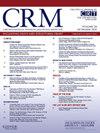The imprecision of measuring activated clotting time (ACT) from the guiding catheter during percutaneous coronary interventions
IF 1.6
Q3 CARDIAC & CARDIOVASCULAR SYSTEMS
引用次数: 0
Abstract
Background
Finding the balance between the reduction in ischemic events and bleeding complications is crucial for the success of percutaneous coronary intervention (PCI). The activated clotting time (ACT) is used routinely worldwide to monitor and titrate anticoagulation therapy with unfractionated heparin (UFH) during the procedure.
Objectives
We aimed to test the accuracy of ACT measurements from the guiding catheter compared to the arterial access sheath.
Methods
Patients undergoing PCI with UFH therapy were prospectively enrolled. Blood samples were drawn from the coronary guide catheter and the arterial access sheath. ACT values were determined in the same ACT machine, and potential interactions with clinical variables were analyzed.
Results
The study included 331 patients with post PCI ACT measurements. The mean ACT value of the catheter samples was statistically higher than the arterial access sample [294 ± 77 s Vs. 250 ± 60 s, p < 0.001]. The mean difference between the guiding catheter and the arterial line sheath samples was 43 ± 27 s (P < 0.001). We found that in 101/331 [30 %] patients the ACT from the guiding catheter was above 250 s, while from the access sheath it was below 250 s. Notably, in 40/331 [12 %] the ACT from the guiding catheter was above 200 s, while from the access sheath it was below 200 s.
Conclusions
Large proportion of patient may be considered to have therapeutic ACT if measured from guide catheter during PCI, while the corresponding ACT from arterial sheath is subtherapeutic. This difference may have clinical and safety significance.
在经皮冠状动脉介入治疗过程中,从引导导管测量活化凝血时间 (ACT) 的不精确性。
背景:在减少缺血事件和出血并发症之间找到平衡点对于经皮冠状动脉介入治疗(PCI)的成功至关重要。活化凝血时间(ACT)在全球范围内被常规用于监测和滴定手术过程中使用的非小份子肝素(UFH)抗凝治疗:我们旨在测试从引导导管测量凝血时间(ACT)的准确性,并与动脉通路鞘进行比较:方法:对接受 UFH 治疗的 PCI 患者进行前瞻性登记。从冠状动脉导引导管和动脉通路鞘管抽取血液样本。在同一台 ACT 仪器上测定 ACT 值,并分析与临床变量的潜在相互作用:该研究包括331名PCI后ACT测量患者。导管样本的平均 ACT 值在统计学上高于动脉通路样本[294 ± 77 s Vs. 250 ± 60 s, p 结论:导管样本的平均 ACT 值在统计学上高于动脉通路样本:如果在 PCI 过程中通过导引导管测量,很大一部分患者的 ACT 可被认为是治疗性的,而通过动脉鞘测量的相应 ACT 则是亚治疗性的。这种差异可能具有临床和安全意义。
本文章由计算机程序翻译,如有差异,请以英文原文为准。
求助全文
约1分钟内获得全文
求助全文
来源期刊

Cardiovascular Revascularization Medicine
CARDIAC & CARDIOVASCULAR SYSTEMS-
CiteScore
3.30
自引率
5.90%
发文量
687
审稿时长
36 days
期刊介绍:
Cardiovascular Revascularization Medicine (CRM) is an international and multidisciplinary journal that publishes original laboratory and clinical investigations related to revascularization therapies in cardiovascular medicine. Cardiovascular Revascularization Medicine publishes articles related to preclinical work and molecular interventions, including angiogenesis, cell therapy, pharmacological interventions, restenosis management, and prevention, including experiments conducted in human subjects, in laboratory animals, and in vitro. Specific areas of interest include percutaneous angioplasty in coronary and peripheral arteries, intervention in structural heart disease, cardiovascular surgery, etc.
 求助内容:
求助内容: 应助结果提醒方式:
应助结果提醒方式:


